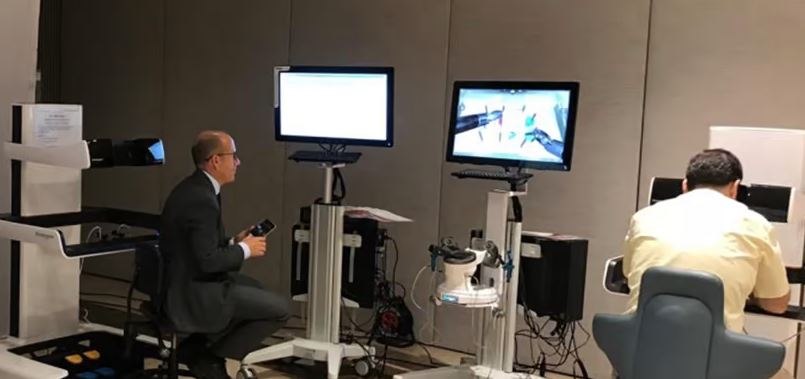公司规模
Large Corporate
地区
- America
国家
- United States
产品
- Aravo
技术栈
- Supplier Information Management
- ERP system
- SaaS platform
实施规模
- Enterprise-wide Deployment
影响指标
- Cost Savings
- Productivity Improvements
技术
- 平台即服务 (PaaS) - 数据管理平台
适用行业
- 教育
适用功能
- 采购
用例
- 供应链可见性(SCV)
- 库存管理
服务
- 系统集成
关于客户
波士顿大学 (BU) 是一所大型、多元化、世界一流的大学,拥有 9,600 多名员工,为来自 58 个国家的 32,000 名学生提供支持。波士顿大学是美国最大的私立大学之一,也是波士顿最大的雇主之一。波士顿大学的教职员工和校友中有 6 位诺贝尔奖获得者,包括马丁·路德·金,22 位普利策奖获得者,以及众多古根海姆和麦克阿瑟奖获得者。2009 年,该大学开始实施一套新的人力资源、采购和财务 ERP 系统。随着新 SRM 系统于 2011 年 7 月上线,波士顿大学采购团队面临着挑战和独特机遇。
挑战
2009 年,波士顿大学开始实施一套新的人力资源、采购和财务 ERP 系统。由于新的 SRM 系统将于 2011 年 7 月上线,波士顿大学采购和采购团队面临着挑战和独特机遇。该团队将即将到来的实施视为进一步提高效率和增强对大学社区服务的机会。然而,他们很快就意识到,必须在 ERP 上线日期之前部署新的供应商管理策略。2009 年,超过 5,000 家主要供应商通过旧系统付款,分散的流程不断加剧了波士顿大学供应商信息的数据质量问题。最初的供应商数据审查很快发现了供应商重复、付款条件矛盾和记录不完整。进一步审查表明,从供应商处获取数据是一个完全手动的过程,几乎没有准确性验证。由于需要用这么少的员工来管理如此多的供应商,因此从未采取任何措施来纠正、更新或验证供应商数据。
解决方案
Aravo 基于 SIM(供应商信息管理)的方法确保供应商数据具有单一真实来源,全球不同业务功能均可访问,可集成到现有 IT 系统中,并能够支持现有业务流程。此外,作为 SaaS 平台,Aravo 为大学提供了必要的灵活性,以适应现有和新的业务流程和 IT 系统,同时提供轻松访问,以便从多个系统检索供应商信息 - 所有这些都比典型的支出管理和 ERP 解决方案成本更低。通过 SaaS 解决方案交付意味着大学可以快速部署 Aravo,尽管数据和信息要求、工作流程和业务规则极其复杂。在 6 个月内,注册调查通过 Aravo 平台通过电子邮件发送给近 5,000 家现有 BU 供应商。供应商注册调查回复包括销售联系人、地址、税务和银行数据、商定的付款条件、多样性认证、OSHA 和承包商安全数据、保险以及任何当前双重签名合同。然后,工作流引擎将供应商数据推送到相应的商品团队进行审核和批准。
运营影响
数量效益

Case Study missing?
Start adding your own!
Register with your work email and create a new case study profile for your business.
相关案例.

Case Study
Revolutionizing Medical Training in India: GSL Smart Lab and the LAP Mentor
The GSL SMART Lab, a collective effort of the GSL College of Medicine and the GSL College of Nursing and Health Science, was facing a challenge in providing superior training to healthcare professionals. As clinical medicine was becoming more focused on patient safety and quality of care, the need for medical simulation to bridge the educational gap between the classroom and the clinical environment was becoming increasingly apparent. Dr. Sandeep Ganni, the director of the GSL SMART Lab, envisioned a world-class surgical and medical training center where physicians and healthcare professionals could learn skills through simulation training. He was looking for different simulators for different specialties to provide both basic and advanced simulation training. For laparoscopic surgery, he was interested in a high fidelity simulator that could provide basic surgical and suturing skills training for international accreditation as well as specific hands-on training in complex laparoscopic procedures for practicing physicians in India.

Case Study
IoT platform Enables Safety Solutions for U.S. School Districts
Designed to alert drivers when schoolchildren are present, especially in low-visibility conditions, school-zone flasher signals are typically updated manually at each school. The switching is based on the school calendar and manually changed when an unexpected early dismissal occurs, as in the case of a weather-event altering the normal schedule. The process to reprogram the flashers requires a significant effort by school district personnel to implement due to the large number of warning flashers installed across an entire school district.

Case Study
Implementing Robotic Surgery Training Simulator for Enhanced Surgical Proficiency
Fundacio Puigvert, a leading European medical center specializing in Urology, Nephrology, and Andrology, faced a significant challenge in training its surgical residents. The institution recognized the need for a more standardized and comprehensive training curriculum, particularly in the area of robotic surgery. The challenge was underscored by two independent studies showing that less than 5% of residents in Italian and German residency programs could perform major or complex procedures by the end of their residency. The institution sought to establish a virtual reality simulation lab that would include endourological, laparoscopic, and robotic platforms. However, they needed a simulator that could replicate both the hardware and software of the robotic Da Vinci console used in the operating room, without being connected to the actual physical console. They also required a system that could provide both basic and advanced simulation training, and a metrics system to assess the proficiency of the trainees before they performed surgical procedures in the operating theater.

Case Study
Edinburgh Napier University streamlines long-distance learning with Cisco WebEX
• Geographically dispersed campus made in-person meetings costly and inconvenient.• Distance-learning programs in Malaysia, India, and China required dependable, user-friendly online tools to maximize interaction in collaborative workspaces.• Virtual learning environment required a separate sign-in process, resulting in a significant administrative burden for IT staff and limited adoption of collaboration technology.

Case Study
8x increased productivity with VKS
Before VKS, a teacher would spend a lot of time showing a group of 22 students how to build a set of stairs within a semester of 120 hours. Along with not leaving the teacher much time to provide one-on-one support for each student to properly learn carpentry, it also left a considerable amount of room for error. Key information would be misinterpreted or lost as the class was taught in the typical show-and-tell way.

Case Study
Scalable IoT Empowering GreenFlex's Sustainable Growth
GreenFlex, a company that supports sustainable development, decarbonization, and energy efficiency, faced several challenges in its quest to expand its business. The company needed to deploy a robust and sustainable IoT technology to support its growth. It was crucial for them to monitor and control devices at customer sites in a safe and reliable manner. They also needed to integrate devices across a range of communication protocols and gather and act on data to meet efficiency targets. GreenFlex had previously built IoT capabilities into its digital platform, GreenFlexIQ, to monitor and manage customer sites remotely. However, they soon realized that they needed a new platform to support their ambitions. They needed a platform that could scale to connect more devices for production management and make it easier for the operations team to manage devices in the field.







